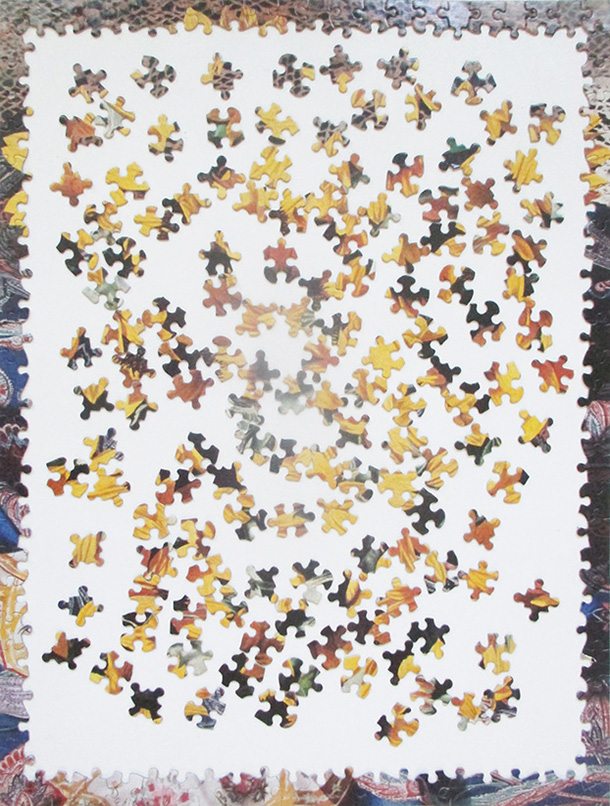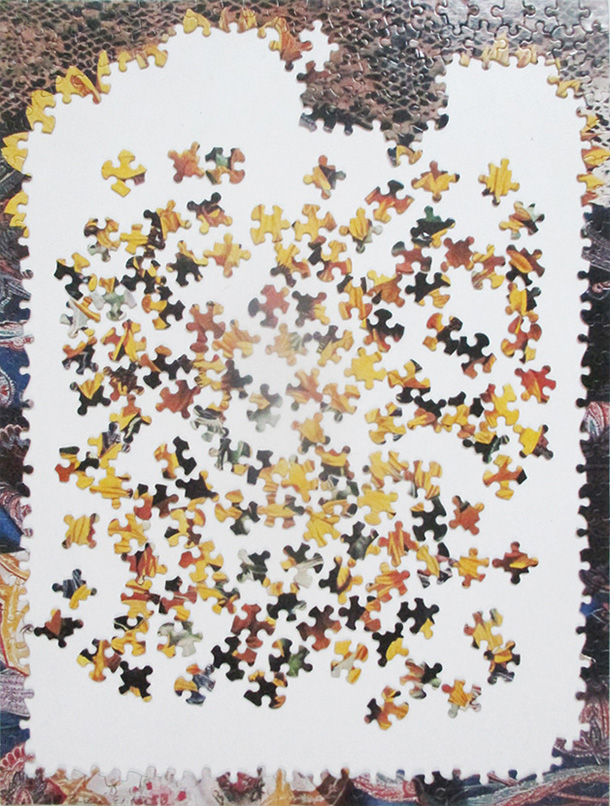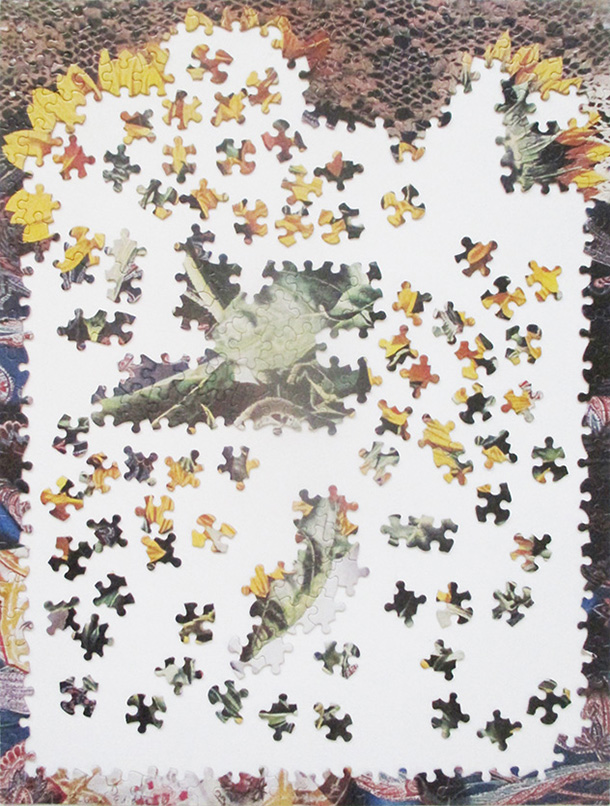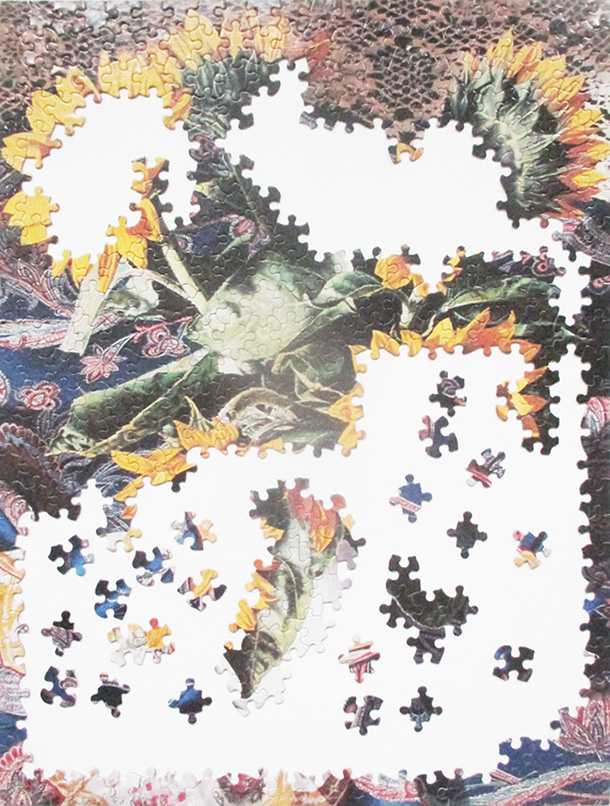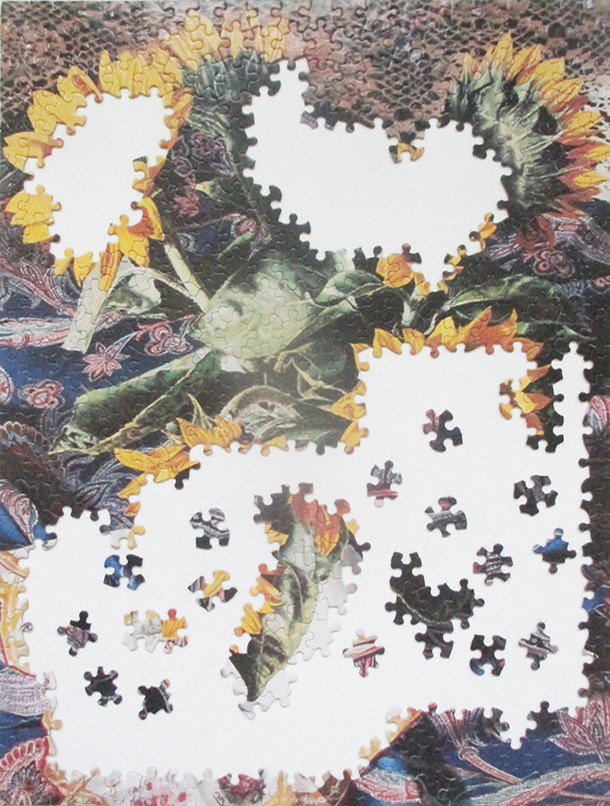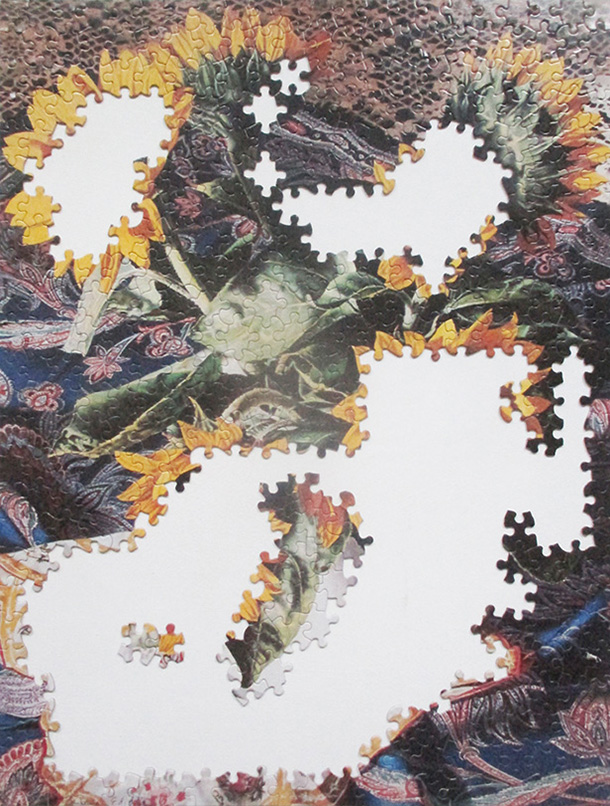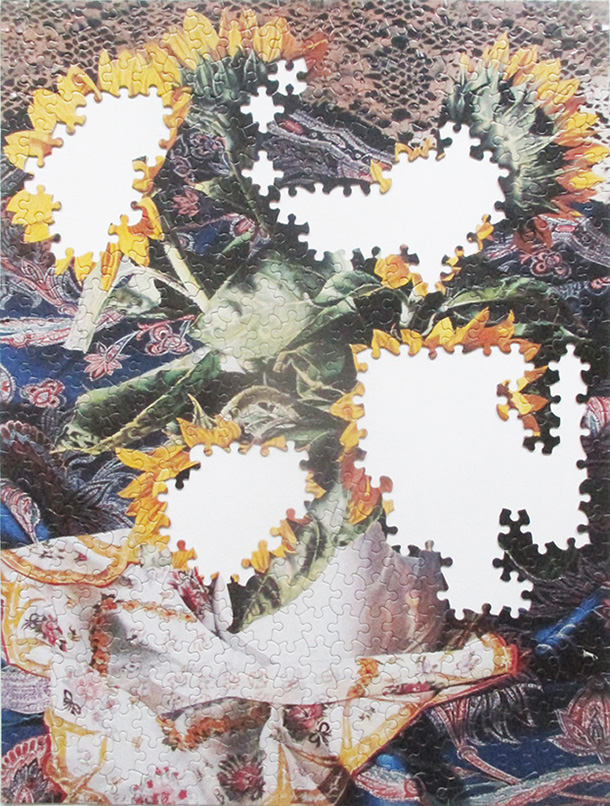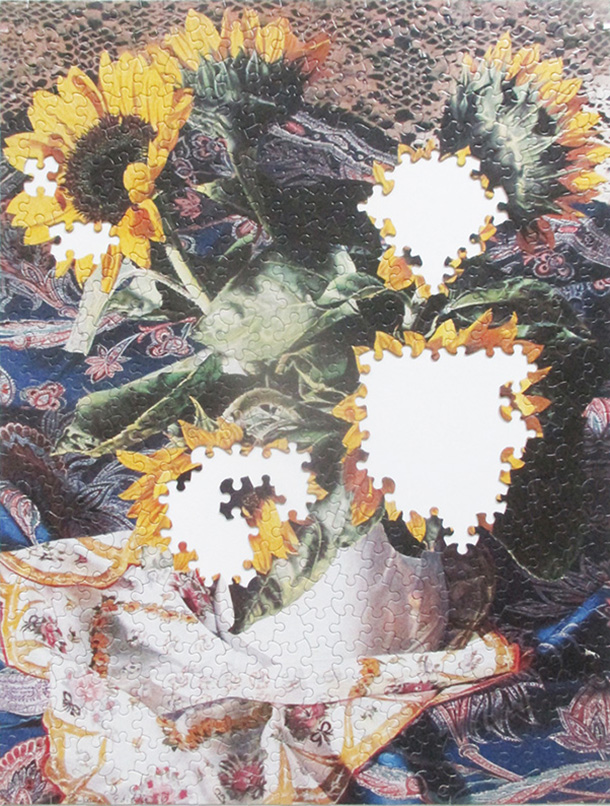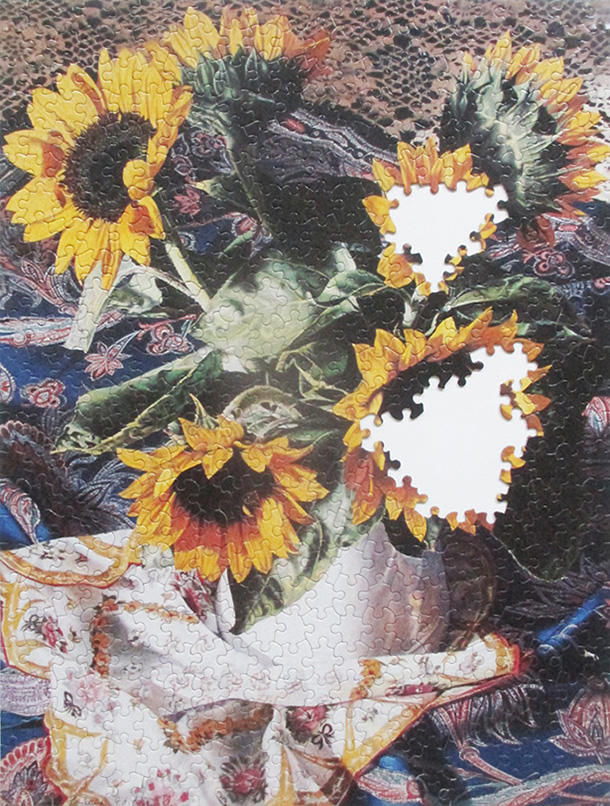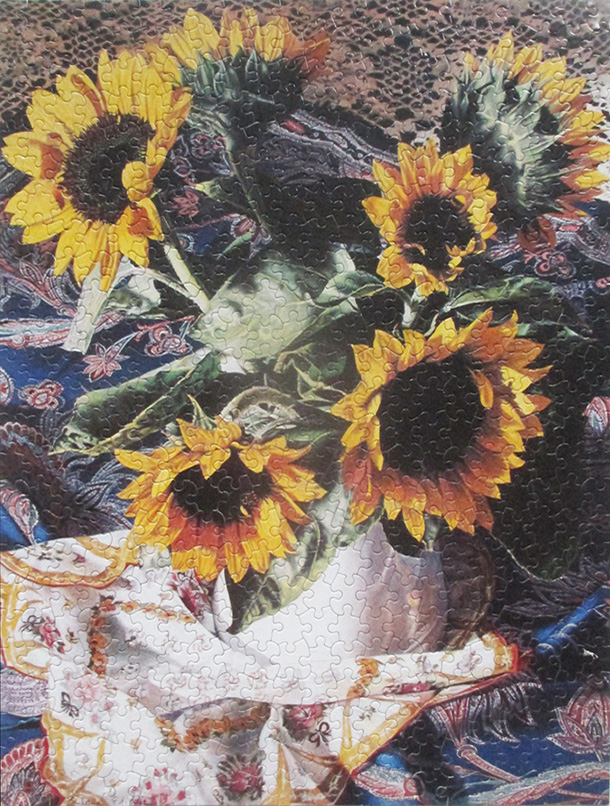Okay, so I knew what I was getting into with this one, and I read it anyway. I was in my husband’s office and saw this on his shelf. Remembered that I had tried reading the original years ago, and didn’t get far. The beginning with all the details on the main character’s family background, his father’s occupation and who knows what else, really bogged me down. I had put it aside as another classic that stylistically I just cannot read. Now I thought: what the heck, it seems like a story I ought to know the basics of, so this version will give me that. It’s a very much abridged and rewritten version, aimed at elementary school kids. Personally, I found it rather dull (hence two stars) as the writing was so straightforward, but I guess that’s what you get.
Warning for SPOILERS here, as I’m going to summarize for myself all the major plot points. Lots of which took me by surprise: I thought the story was all about this young man who gets shipwrecked on an island and lives there alone for years before finally encountering a companion and getting rescued (the scene where he finds a footprint in the sand is in my head from ages ago, no idea where I first came across that). But there’s so much more before all that.
It starts with young Robinson fretting at home, because his parents want him to study and become a lawyer and he just longs for adventure- to go to sea! He finally breaks their hearts by leaving against all their warnings, and on his first voyage is immediately met with storms. That’s frightening, but it doesn’t shake his desire to travel and see the world. The next ship he embarks on goes to Africa where most of the crew succumbs to illness and fever. On a later ship, they get accosted by pirates, he’s taken prisoner, and forced to work as a slave in a foreign land until with two other slaves, he escapes when they’re supposed to be out fishing for their master (they just keep going). They get picked up by an English ship which takes them to Brazil, where Robinson (from selling the fishing boat and earning some wages) buys his own plantation and runs it for two years, with good success. But the old urge for adventure creeps up again and he can’t help finally going on board another ship. This is eight years after his initial voyage.
A good third into the book, Crusoe encounters the storm in the Carribean that strands him on the famous (to us) island. All his shipmates drown. Luckily the ship itself survives in part, driven on the reef, and after the initial shock of finding himself the only survivor, he spends a good two weeks going daily out to the wreckage and bringing back ashore all the supplies he can manage. Then works making himself a tent, and later a better shelter against a cave- though I don’t know why he had to fortify it so well, as he never mentions dangerous animals on the island? and never at this point saw another human being. He’s got just enough food from the broken ship to last him until he figures out how to grow a few crops, and locates fruit to eat, goats to hunt, etc. Teaches himself to make baskets, catches a parrot to keep as a pet, even has a dog that also survived the shipwreck.
About ten years after being alone on the island, he’s stunned to find a human footprint. Terrified, because he assumes it’s from someone who would harm him- “natives” or maybe pirates? He hides, but then doesn’t see another sign of humans for another two years. Finally now we get to the point where Crusoe meets the man he names Friday, when a group of men land on the island with two prisoners along. Crusoe startles them and frees the prisoners, and one becomes his companion- he apparently doesn’t want to leave. The time it takes for the other man to learn to speak English- at first they just communicate with gestures- is really glossed over. The two men work together, eventually building a seaworthy craft and are ready to leave the island for good. Then they encounter another ship coming to shore- this one the crew had mutinied. When Crusoe realizes what happened, he helps the captain take control again, talks most of the crew back to sense, and they sail off together. They leave behind on the island, those two men who had started the mutiny- all set up well for survival what with the shelters, supplies, tamed goats and growing crops that Crusoe had in place. I suppose they deserved the punishment, but after all Crusoe had suffered on the island (he ate well, the worst thing was solitude) it seems cruel he left others to that fate. It was twenty-eight years he had spent on the island.
From what I briefly looked up, the story of Robinson Crusoe was based roughly on the account of a man Alexander Selkirk, who was marooned on an island for four years. I have to wonder how much of the original Defoe story this rewritten one left out, there are parts in particular that I really wanted more explanation of, and lots of details are sorely lacking. But I think all the other details in the original would swamp me, based on the few pages I did get through in my previous reading attempts, and other reviews I’ve seen online. So I’m glad I read this to have a solid picture of the narrative in my head- if I ever do approach Defoe’s novel again, maybe it will be easier going.
Borrowed from a family member.
 This beautiful puzzle was so difficult. Good quality, and a lovely funny triangular piece cut (like the Little Helpers one) but the pieces are a tad on the small side. And the detailed patterns so intricate, it really intimidated me at first. Took three or four days just to get the border of the frames done. It got easier near the end, but I swear there were some sittings I only put ten pieces in! If I ever rework this one, I think I’ll do the figures first. Odd to me that they all have the same face, but looking at the artist’s other work, every single beautiful woman in her pictures, has the same facial features. I have one other puzzle by this artist, made by a different company.
This beautiful puzzle was so difficult. Good quality, and a lovely funny triangular piece cut (like the Little Helpers one) but the pieces are a tad on the small side. And the detailed patterns so intricate, it really intimidated me at first. Took three or four days just to get the border of the frames done. It got easier near the end, but I swear there were some sittings I only put ten pieces in! If I ever rework this one, I think I’ll do the figures first. Odd to me that they all have the same face, but looking at the artist’s other work, every single beautiful woman in her pictures, has the same facial features. I have one other puzzle by this artist, made by a different company.
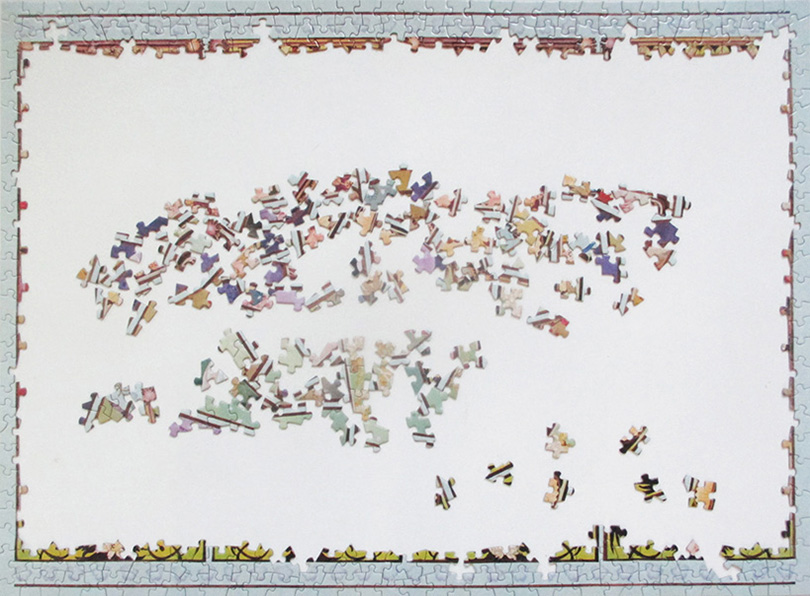

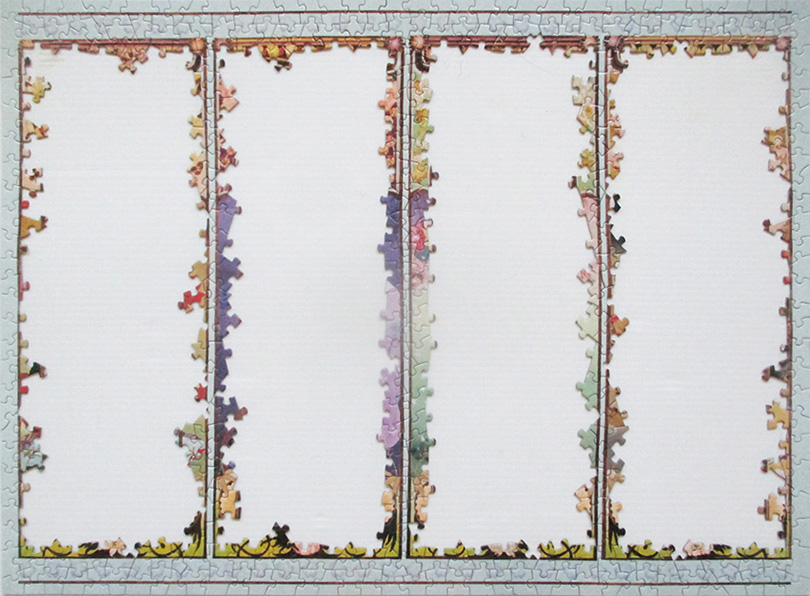

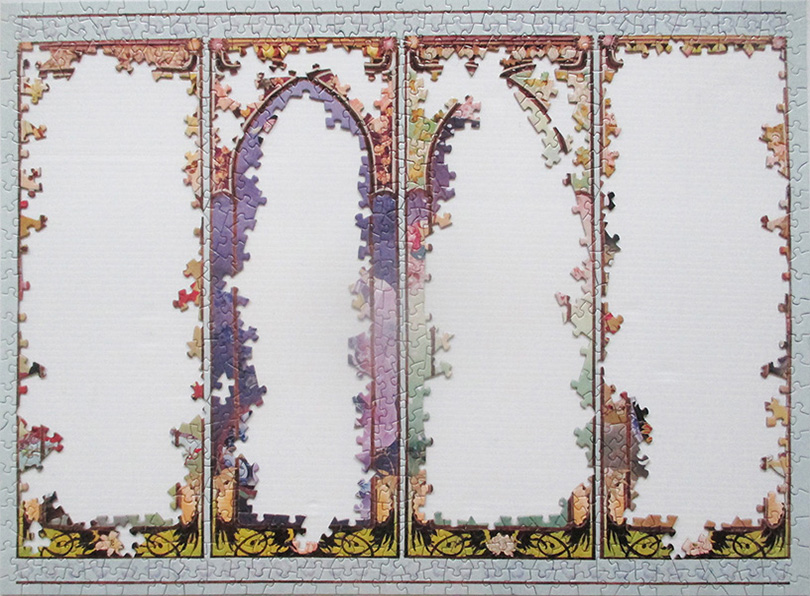

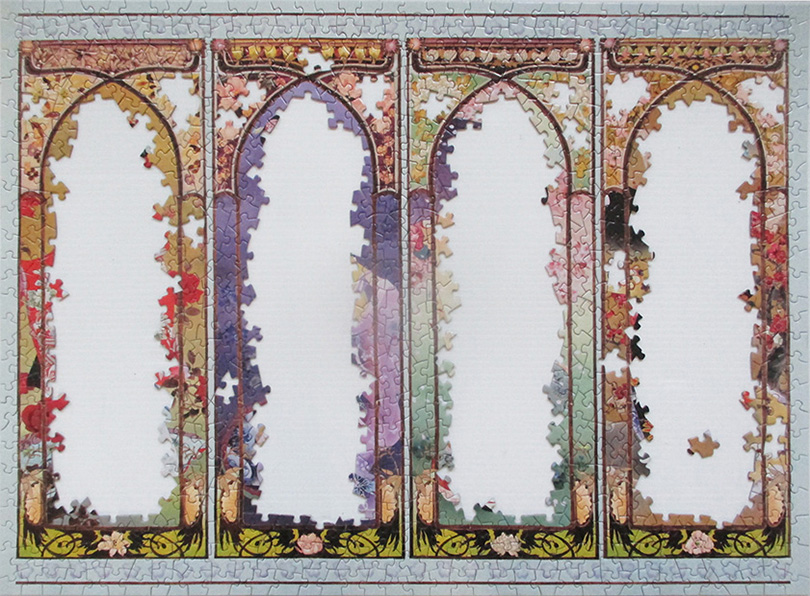
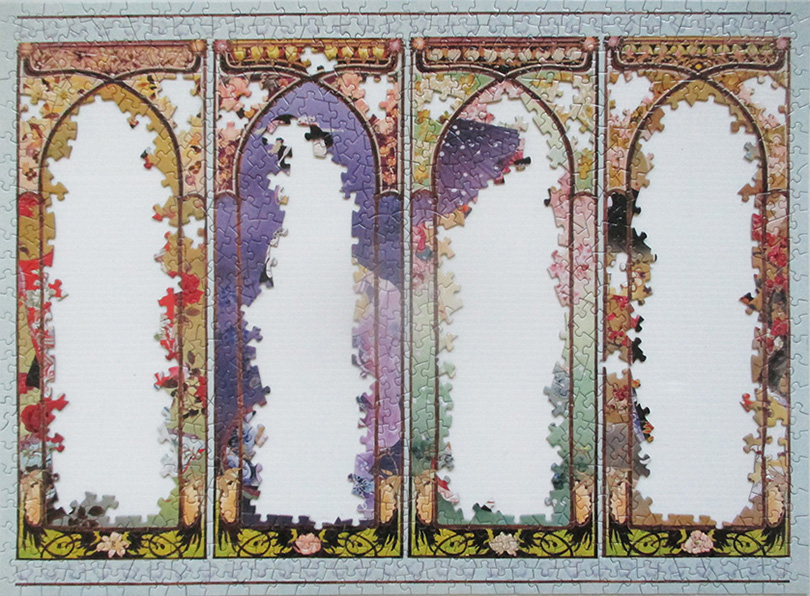
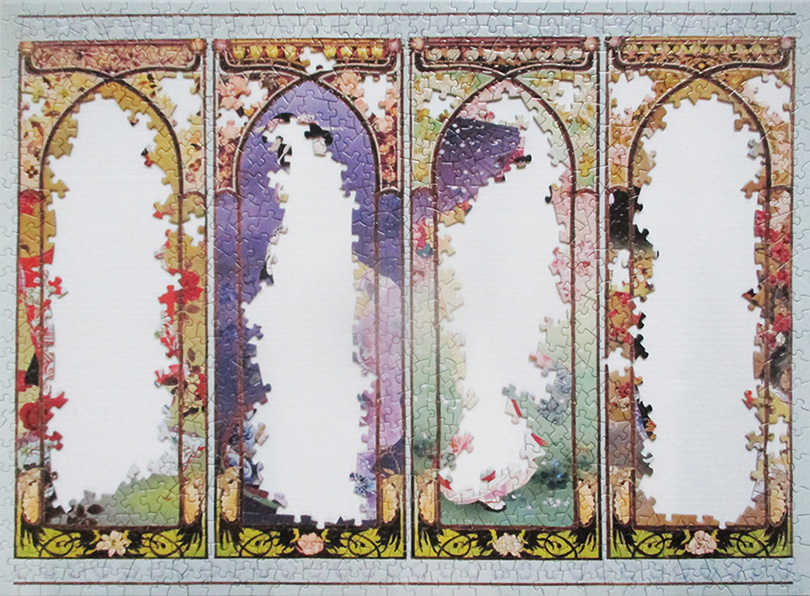
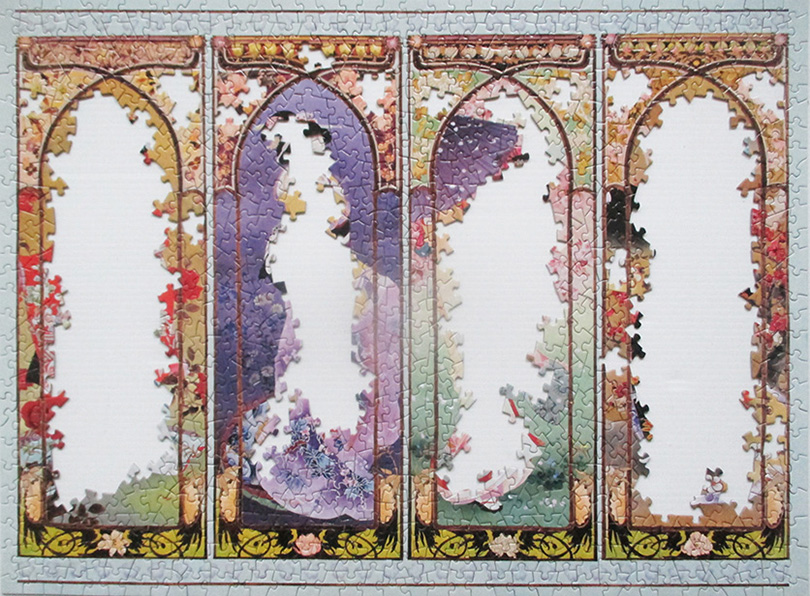

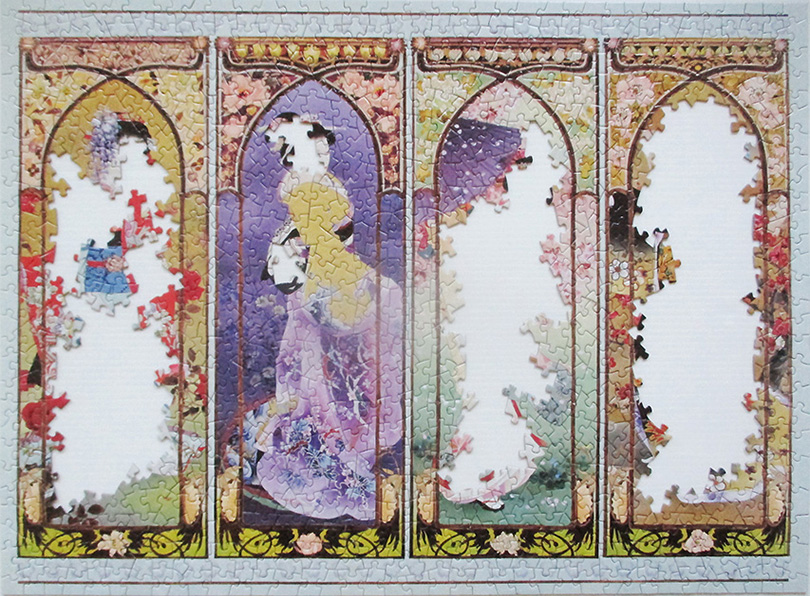
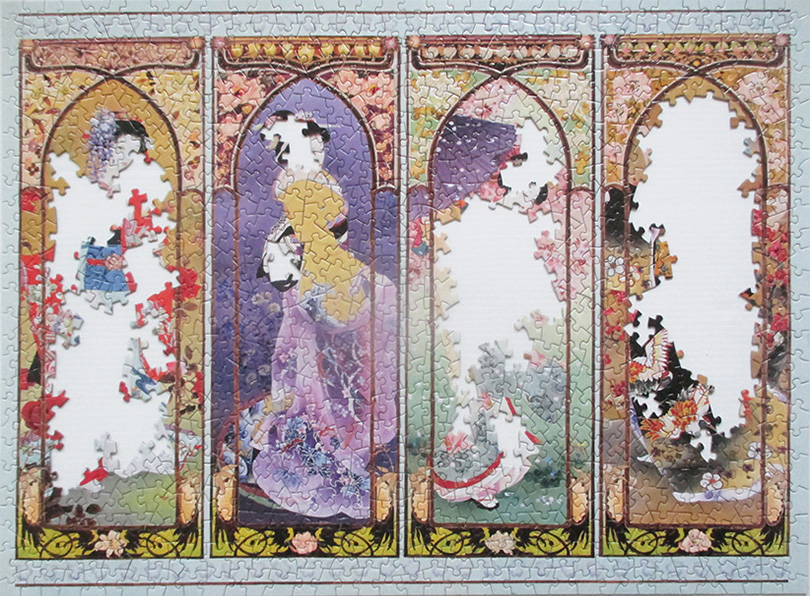





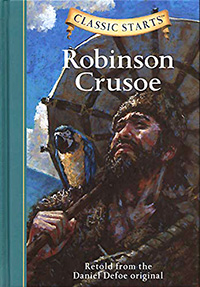


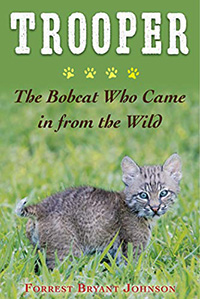
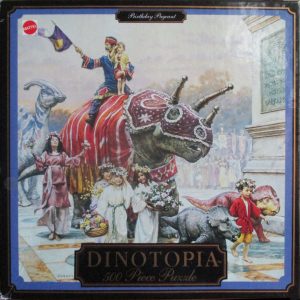 A Dinotopia puzzle. I’m not an actual Dinotopia fan, but there was a large beautiful book from the series in my stepson’s room. I much admired the pictures- the artist is really good at doing children’s faces, the soft features and expressions so natural.
A Dinotopia puzzle. I’m not an actual Dinotopia fan, but there was a large beautiful book from the series in my stepson’s room. I much admired the pictures- the artist is really good at doing children’s faces, the soft features and expressions so natural.
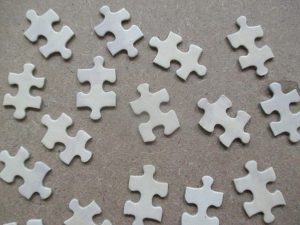
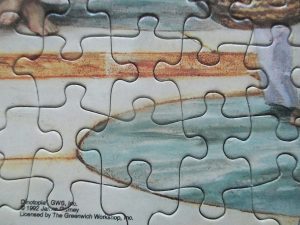



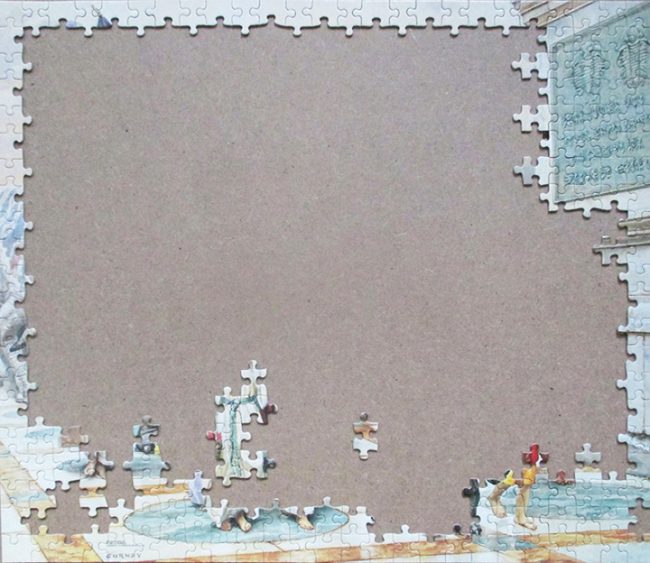
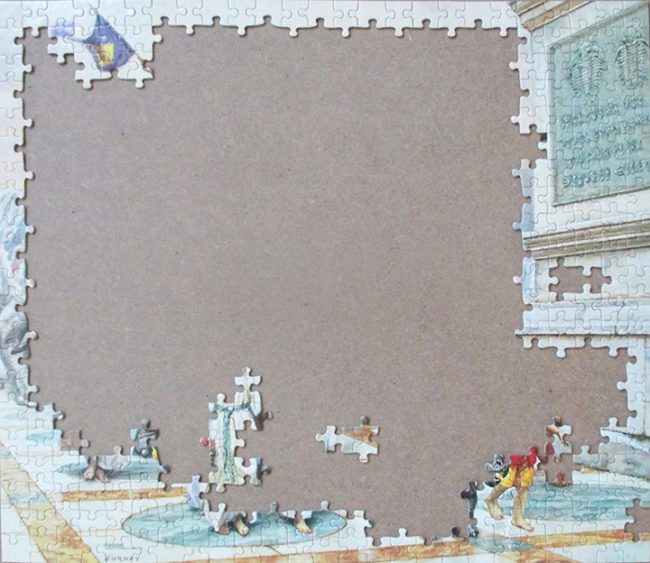
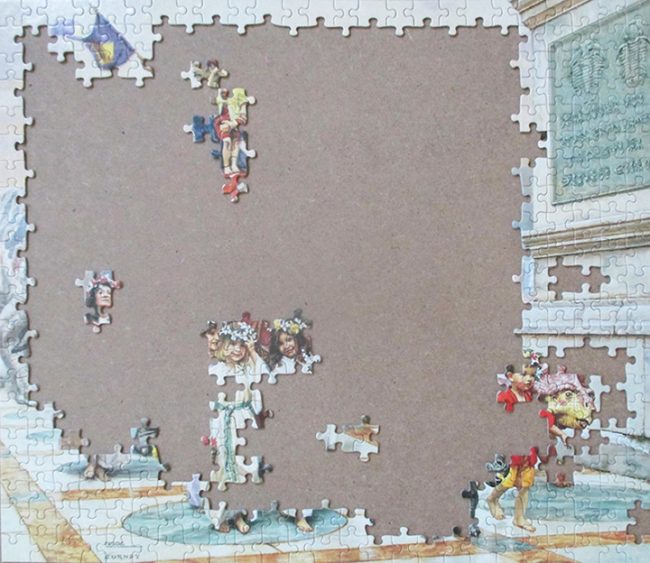

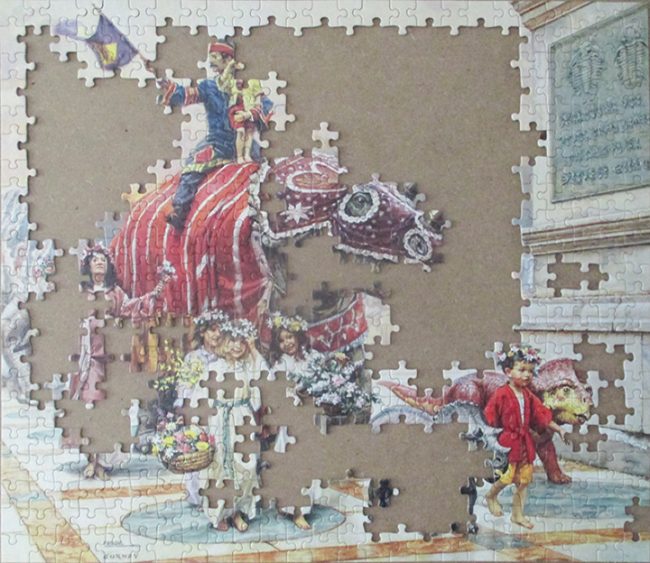
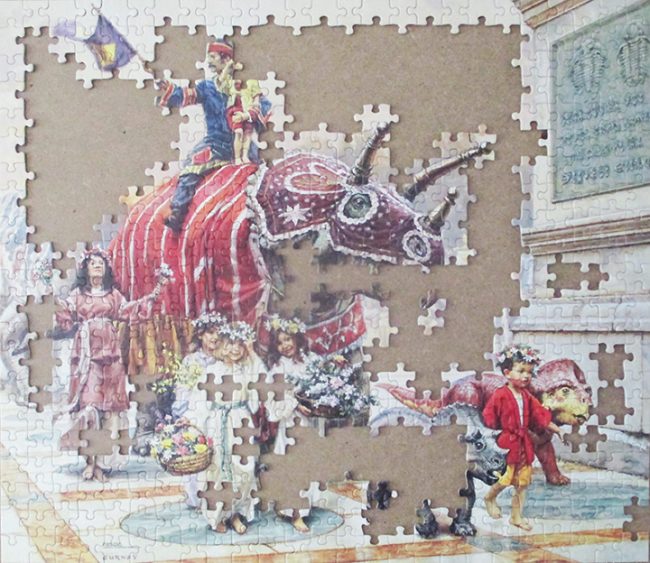
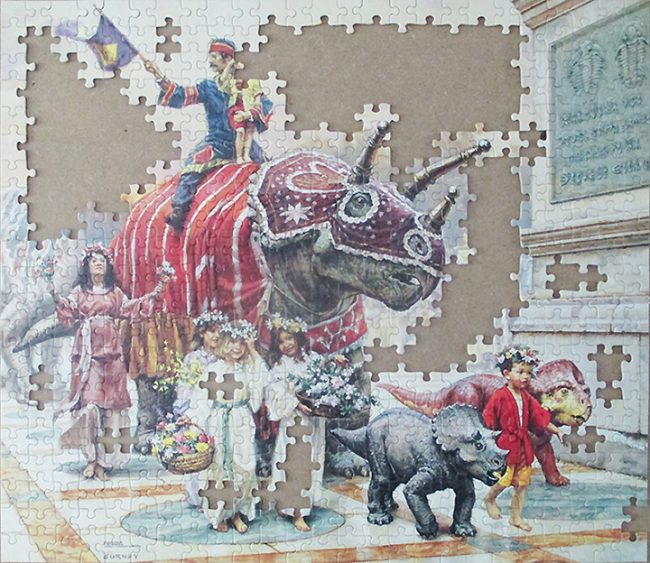
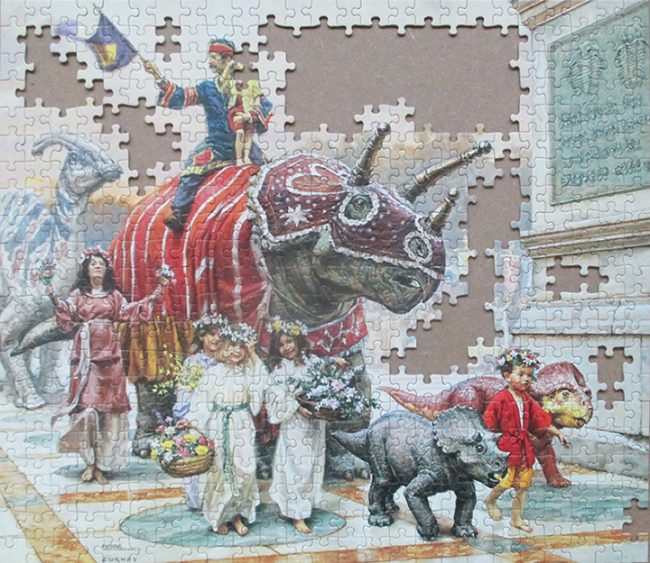
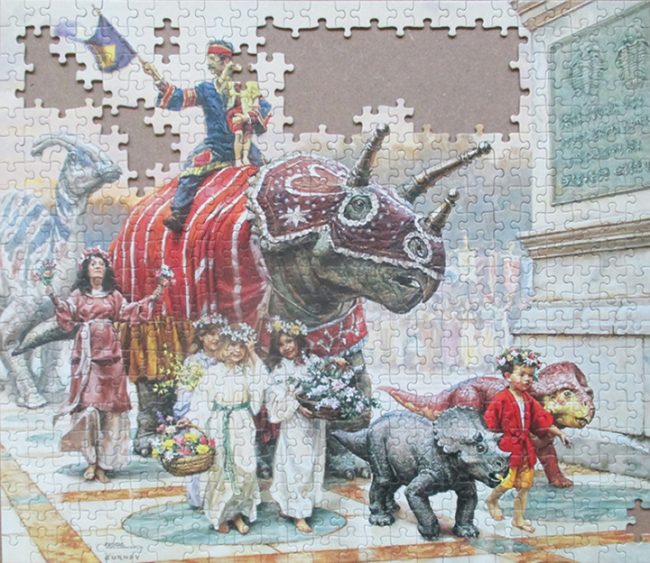
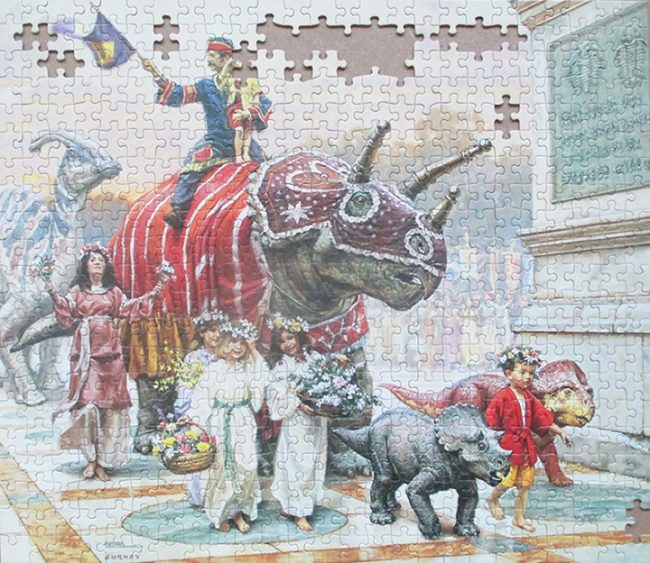

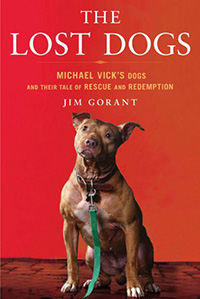

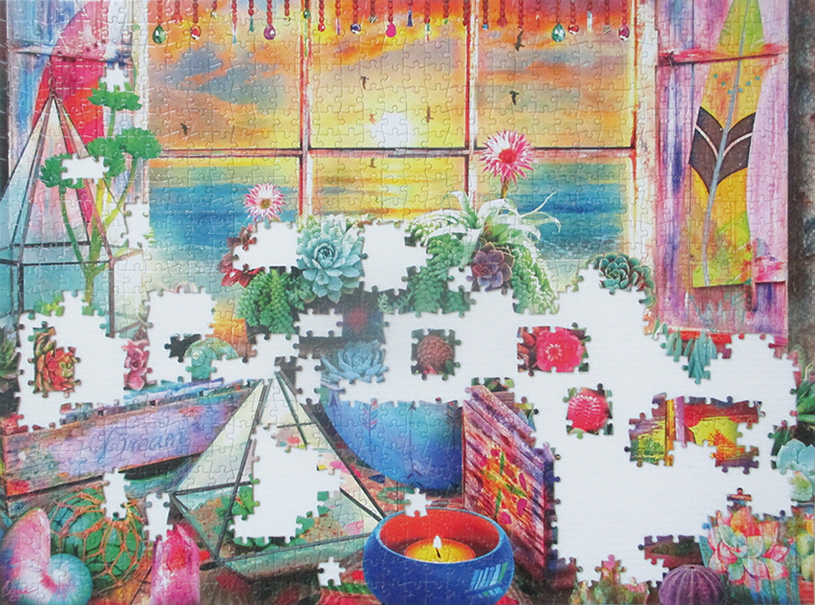
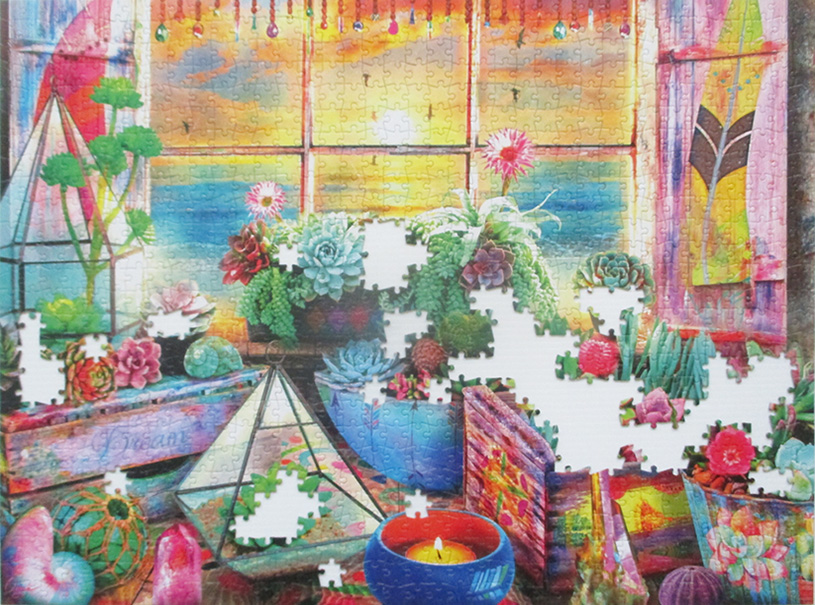


 This was bound to happen to me someday, acquiring used puzzles as I do. Even for its age (made almost twenty years ago) this one was decent in quality. The pieces have average shape variety, they’re a bit on the small side and a tad too shiny, but that’s okay. Problem is who donated this to the thrift store: it’s missing a ton of pieces. I noticed right away when I was sorting out edges, that I was hardly finding any. A five-hundred piece puzzle, and this was all the edges I got:
This was bound to happen to me someday, acquiring used puzzles as I do. Even for its age (made almost twenty years ago) this one was decent in quality. The pieces have average shape variety, they’re a bit on the small side and a tad too shiny, but that’s okay. Problem is who donated this to the thrift store: it’s missing a ton of pieces. I noticed right away when I was sorting out edges, that I was hardly finding any. A five-hundred piece puzzle, and this was all the edges I got:
 That couldn’t be right. I put all the dark ones on a lighter board, to visualize easier. Nope, no more edges.
That couldn’t be right. I put all the dark ones on a lighter board, to visualize easier. Nope, no more edges.
 Spread out the lighter pieces carefully: no more there, either.
Spread out the lighter pieces carefully: no more there, either.
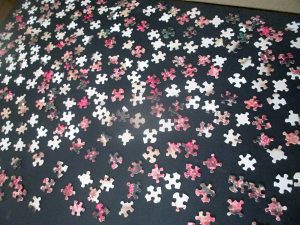 At this point I realized it was probably very incomplete. Why did I put it all together anyway? I suppose I was curious to know if just the edges were missing, and how bad it was. In fact the curiosity and aggravation drove me so much, I ended staying up way too late last night working on this one (which is why some of the photos in the middle of the assembly shots have different lighting).
Pretty bad, turns out. I counted at the end. Ninety-five pieces missing. Wow. This one is going to turn into crafts, or maybe just get tossed in the recycling bin. Shame.
At this point I realized it was probably very incomplete. Why did I put it all together anyway? I suppose I was curious to know if just the edges were missing, and how bad it was. In fact the curiosity and aggravation drove me so much, I ended staying up way too late last night working on this one (which is why some of the photos in the middle of the assembly shots have different lighting).
Pretty bad, turns out. I counted at the end. Ninety-five pieces missing. Wow. This one is going to turn into crafts, or maybe just get tossed in the recycling bin. Shame. 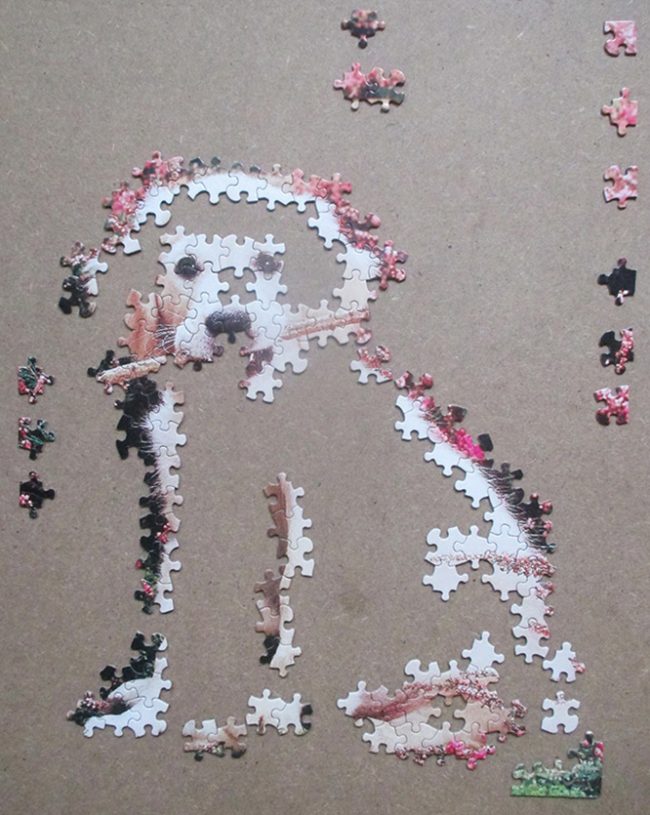
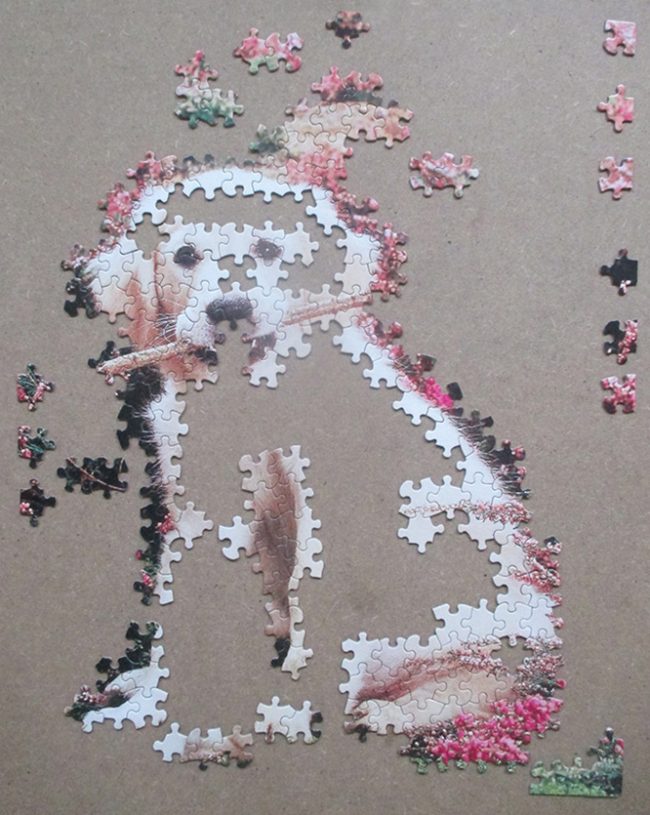
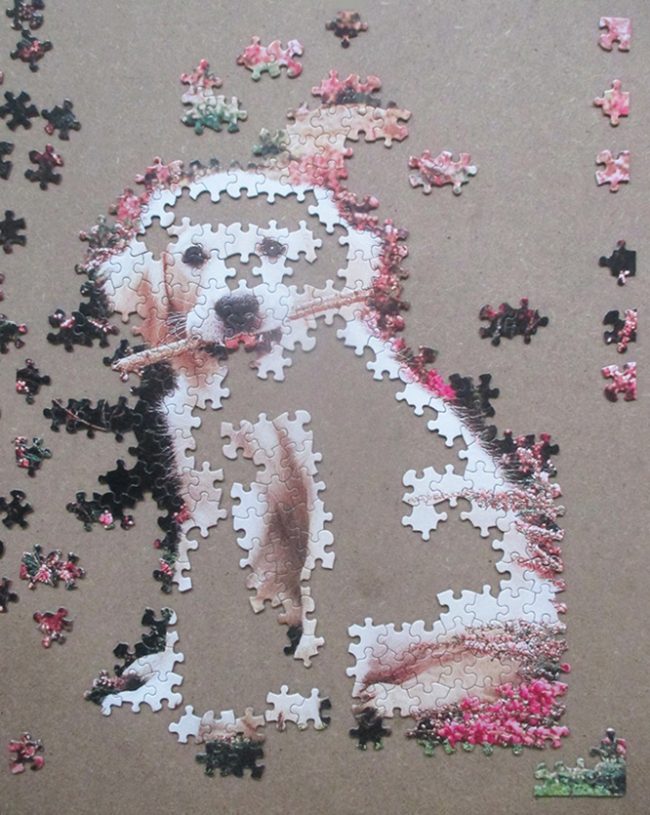

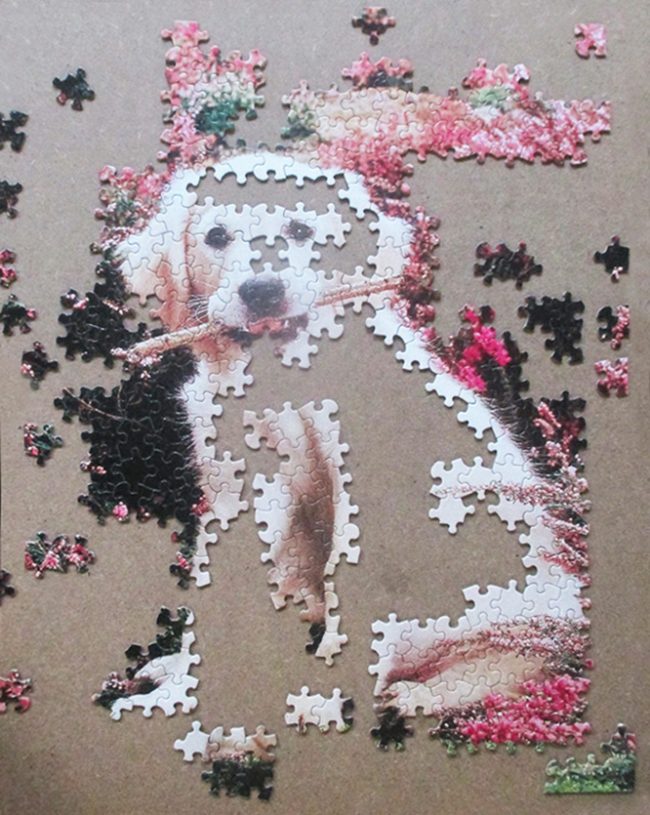
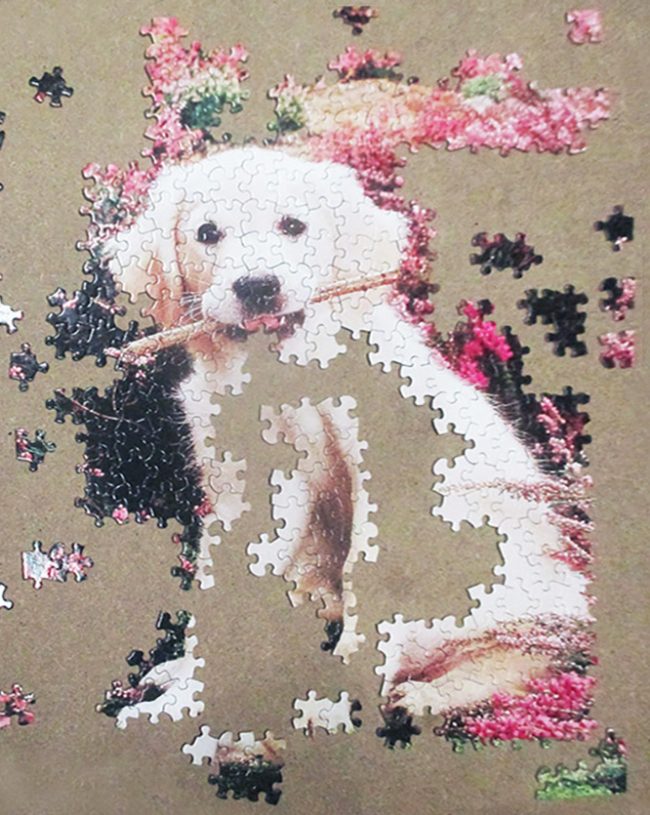

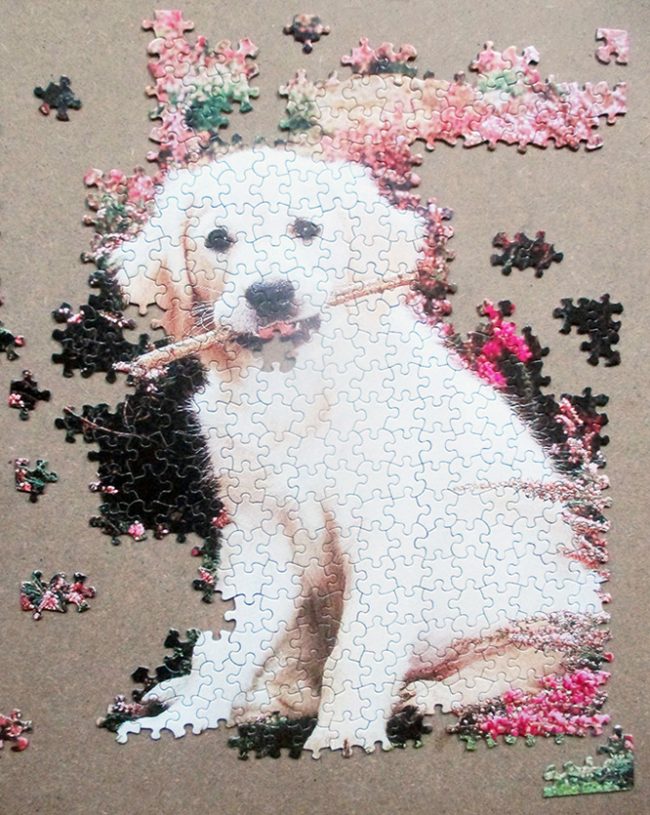
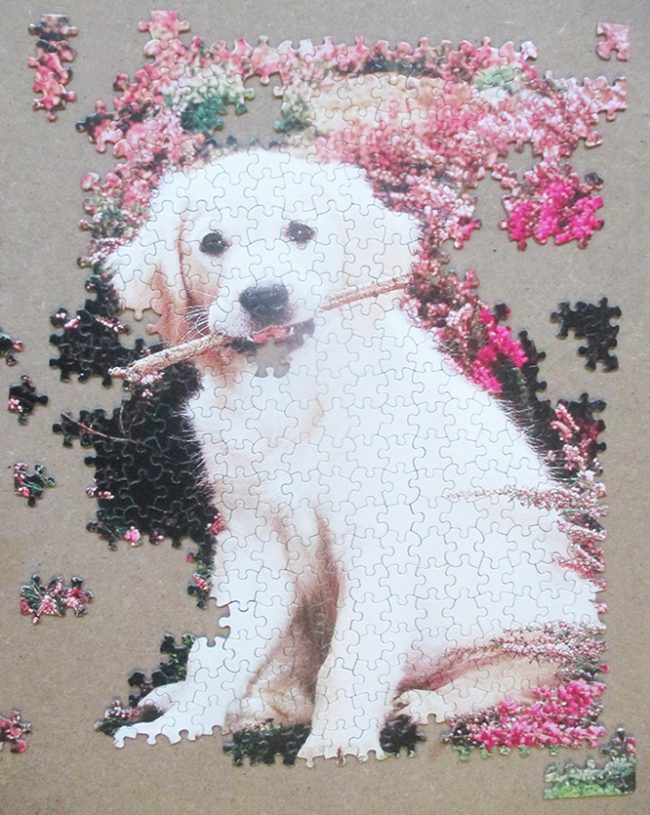

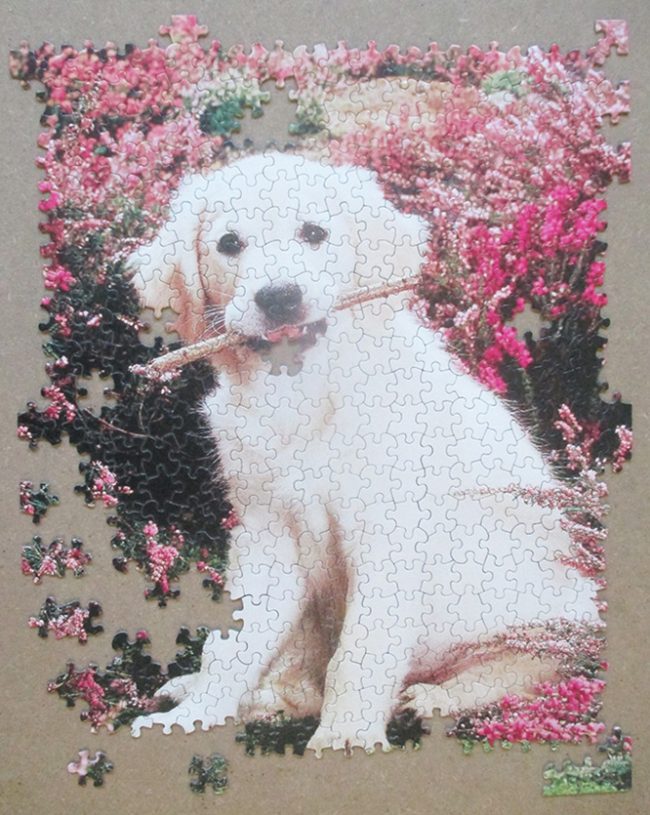
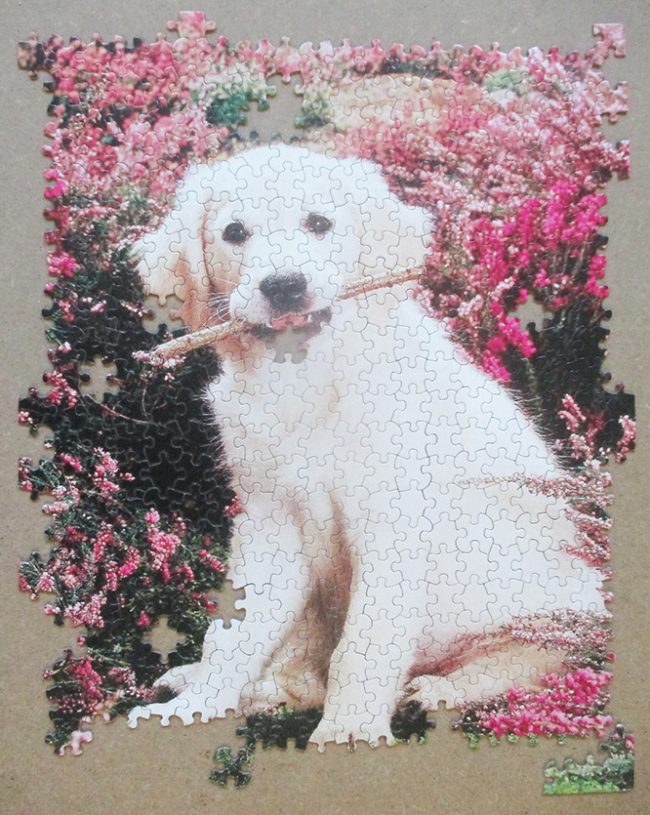
 This is an older puzzle- from 2007. Style of the logo on the box is different. Puzzles by the same company are very popular I see them all over the place nowadays, but just know- they won’t last. I don’t know how many hands this one went through before mine, but it had plenty of layers peeling up off the pieces (I only glued a few of them back down, then gave up) and quite a few bent knobs. Someone before me had taped the picture layer back on one piece- little bits hung over the edge but it still fit in place just fine. Remarkably, no missing pieces!
This is an older puzzle- from 2007. Style of the logo on the box is different. Puzzles by the same company are very popular I see them all over the place nowadays, but just know- they won’t last. I don’t know how many hands this one went through before mine, but it had plenty of layers peeling up off the pieces (I only glued a few of them back down, then gave up) and quite a few bent knobs. Someone before me had taped the picture layer back on one piece- little bits hung over the edge but it still fit in place just fine. Remarkably, no missing pieces!